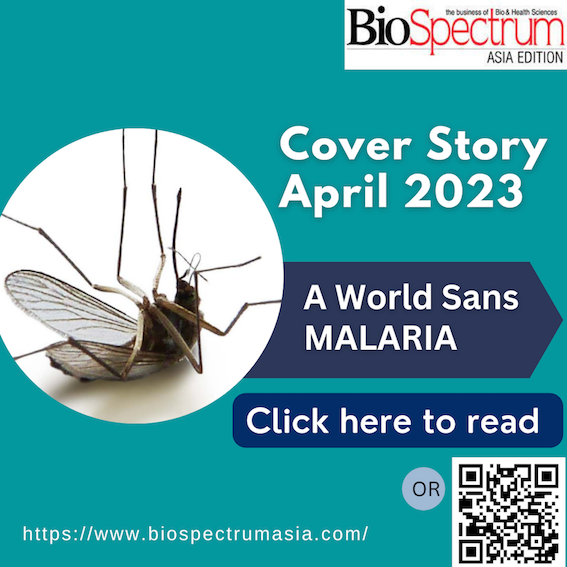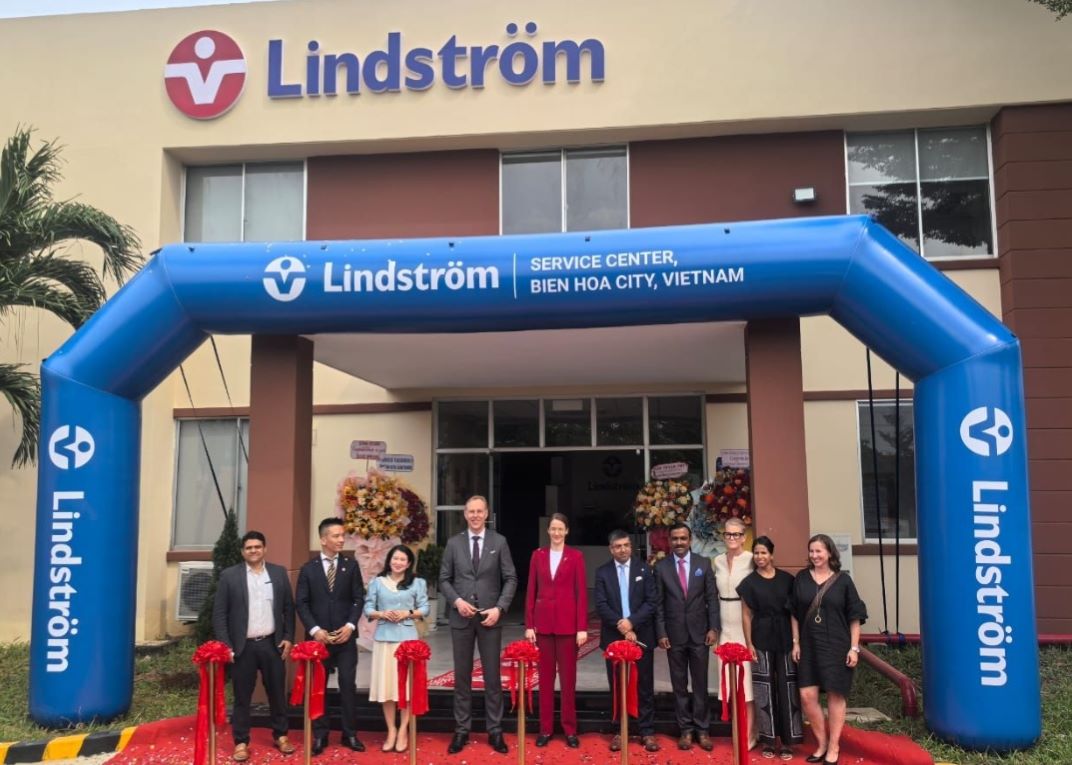
Malaria, the oldest and most complex disease affecting mankind, is prevalent in the Asia Pacific (APAC) region, which houses 60 per cent of the world's population and is second only to Africa in the number of malaria cases. Despite this, most APAC countries have made impressive strides in combating malaria, reducing malaria cases by 82 per cent from approximately 18 cases per 1000 at-risk population in 2000 to about three cases per 1000 at-risk population in 2021.
The 2022 World Malaria Report by WHO states that South East Asia is progressing towards achieving its 2030 malaria targets. Seven of the nine countries in the region that are endemic to malaria recorded a reduction of over 40 per cent in malaria cases, with Timor-Leste reporting zero cases. While Indonesia recorded less than a 40 per cent reduction, Myanmar reported no change. Bhutan, DPR Korea, Thailand, and Timor-Leste recorded zero malaria deaths. Most countries in the region achieved over a 40 per cent reduction in mortality rates, with the exception of Indonesia, which achieved less than a 25 per cent reduction.
Despite the gains, malaria elimination remains challenging owing to drug resistance, new strains and accessibility issues. Let’s take a deep dive into the elimination strategies of high-burden countries in the region.
India
In the WHO South-East Asia Region, India bears a significant burden of malaria, accounting for 79 per cent of cases and approximately 83 per cent of all malaria-related deaths. The Indian government has made ending malaria a top priority, introducing its first National Framework for Malaria Elimination (2016-2030) and taking various initiatives to achieve its target. In 2019, the government increased funding for the National Vector Borne Disease Control Programme by more than 25 cent, demonstrating its commitment to the cause.
Additionally, India contributed $22 million to the Global Fund for AIDS, TB, and Malaria for the 6th replenishment cycle (2020-22), an increase of 10 per cent over the previous cycle. To coordinate and prioritise research efforts, Malaria Elimination Research Alliance (MERA) India was launched in 2019, bringing together researchers from the Indian Council of Medical Research (ICMR) non-ICMR research institutions, universities, and national programmes. The alliance fosters multicentric studies in thematic areas to provide a platform for pan-India data, supporting the goal of eliminating malaria from India by 2030.
The government claims that at least 124 districts reported zero malaria cases in 2021. It also shows that India’s e-Sanjeevani has shown the pathway for tele-consultation and tele-referencing which are being widely used at the round levels for diagnosis and treatment of various healthcare problems including malaria.
Odisha has played a significant role in India's successful fight against malaria in recent years, particularly in high-burden states. The state government has implemented innovative strategies and scaled up the distribution of long-lasting insecticide nets and rapid diagnostic tests to reduce malaria cases and deaths. In 2017, the government launched the 'Durgama Anchalare Malaria Nirakaran' (DAMaN) programme, which provided population-wide malaria testing and treatment services to the state's most inaccessible people at the highest risk of malaria. These efforts have been successful, and since 2017-2018, Odisha has reduced malaria cases and deaths by over 90 per cent. Malaria No More, along with its network of advisers and partners such as UNICEF and Abbott, is now working with the governments of Odisha and India to replicate Odisha's success nationwide by supporting local strategies that have already shown positive results.
"We have made significant progress in reducing the incidence of malaria, and are on track to eliminate it by 2030. However, there are some remote forest areas in states like Odisha, Chhattisgarh, and the North Eastern states, where marginalised tribal communities reside, which pose a challenge in achieving the last mile elimination. To overcome this challenge, it is necessary to intensify surveillance, testing, and vector control measures in these areas," said Dr Ambarish Dutta, Additional Professor, Epidemiology at Public Health Foundation of India (PHFI).
Pratik Kumar, Country Director, Malaria No More, has a different stance. He said, "India has set forth an ambitious goal of eliminating malaria from the country by 2030, in line with the Prime Minister's vision. While the country has made tremendous progress in controlling the spread of malaria, the road to elimination is still far and has some key challenges along the way. The private health sector, responsible for treating and diagnosing a major proportion of malaria patients, is a key stakeholder for ascertaining and addressing the true disease burden of malaria in India - ensuring each case is detected and treated. Furthermore, the country also contains hidden or asymptomatic burden of malaria - where the disease manifests without the presence of detectable symptoms - further adding to the problem. Finally, while innovative tools and inventive solutions exist or are in the pipeline, the prompt uptake of such solutions into our malaria elimination programme has been lacking. Addressing these and other key challenges will remain critical to achieving malaria elimination. Eliminating malaria is not the responsibility of the government alone. All sections of the society must come together and do their bit to help us achieve a Malaria Mukt Bharat."
Two of India's largest pharmaceutical companies, Serum Institute of India (SII) and Bharat Biotech, are working (separately) on developing malaria vaccines. SII has licensed the R21 malaria vaccine from the Jenner Institute at Oxford University and will be using Novavax's proprietary Matrix-M vaccine adjuvant in conjunction with it. Meanwhile, Bharat Biotech has signed a technology transfer agreement with GlaxoSmithKline (GSK) and PATH for the malaria vaccine, RTS,S/AS01. The agreement includes the transfer of manufacturing of the RTS,S antigen part of the vaccine and the grant of a licence on all rights pertaining to the RTS,S/AS01 malaria vaccine to Bharat Biotech. Additionally, Hyderabad-based startup Sapigen Biologix has received Rs 200 crore from the Indian government and Bharat Biotech to develop and commercialise two vaccines - an intranasal COVID-19 vaccine and an RTS,S malaria vaccine.
Indian drugmakers and researchers are also working on developing novel antimalarial drugs. In 2021, Zydus Cadila's antimalarial compound ZY19489 (MMV253) received Orphan Drug Designation from the US FDA. The drug has completed phase 1 clinical trial.
CSIR-Central Drug Research Institute (CDRI), scientists are looking for alternative drug targets by probing into mitochondrial dynamics and inter-organelle communication of malarial parasites during environmental stress and drug-induced toxicity.
Indonesia
Indonesia had an estimated 800,000 malaria cases in 2021, the second highest number in South-east Asia after India. Indonesia is aiming to achieve malaria elimination by 2030 by adopting a region-wise subnational elimination plan in a phased manner.
The country has adopted four key strategies to ensure universal access to malaria case management and prevention; transform malaria surveillance as the core intervention of malaria elimination; improve enabling environment to ensure malaria elimination achievement including through community engagement; and strengthen health systems to deliver the malaria elimination programme. Improving malaria surveillance through the electronic malaria surveillance information system (SISMAL) have led to improvement in case-finding and reporting, response and data analysis. In addition to health facilities, private-sector hospitals and clinics as well as military hospitals are reporting to SISMAL.
“Indonesia is implementing sub-national elimination towards national elimination in 2030. Currently 372 out of 514 districts/cities have achieved malaria elimination. Indonesia is in the hard rock level, where 90 per cent of cases come from Papua, which is mostly a hard to reach area and for low endemic and stagnant areas, most of them have problems with MMP (migrant mobile population). So in an effort to achieve 2030 elimination, we must reduce the burden of cases in Papua as fast as possible and also focus on the MMP problem, innovations that we will try to do such as MDA (mass drugs administration), IPTp (intermittent preventive treatment of malaria during pregnancy), IPTf (intermittent preventive treatment for forest goers). In addition, intensive and sustainable vector control must also be carried out,” said Dr Hellen Dewi Prameswari, Head of Malaria Prevention and Control Working Team, Ministry of Health, Republic of Indonesia.
Myanmar
In 2021, Myanmar saw an increase in numbers of both Plasmodium falciparum (Pf) and Plasmodium vivax cases because of the continued political instability in the area. In 2021, Myanmar continued to account for most of the indigenous malaria cases (87.7 per cent) and indigenous P. falciparum malaria cases (80.9 per cent). Myanmar adopted the goal of eliminating malaria by 2030. Also in Myanmar, the new USAID/PMI Eliminate Malaria Activity (PMI-EM), started programme implementation in October 2021 in collaboration with Myanmar’s National Malaria Control Programme and other implementing partners, including PATH and Alight.
Building on Defeat Malaria’s impact, this 5-year activity works in regions with high malaria incidence and with hard-to-reach migrant groups, scaling up proven interventions to ensure treatment compliance and identify cases of drug-resistant malaria. PMI-EM is contributing to the elimination of the indigenous transmission of Pf malaria by 2025 and helping to put Myanmar on the path to eliminate all human malaria by 2030.
What’s next in drug developments
The approval of the malaria vaccine in 2021 was a significant milestone in the fight against this disease. Developed by PATH Malaria Vaccine Initiative and GlaxoSmithKline, UK, the TRS,S vaccine is the first and only vaccine recommended to prevent malaria in children, protecting over 1.2 million children in Ghana, Kenya, and Malawi. The vaccine will soon be expanded to several other countries, while other vaccines such as BioNTech's BNT165b1 and Sanaria Inc. malaria vaccine are also in development, with phase 1 and phase 2 trials underway.
Apart from vaccines, a couple of antimalarial drugs to combat drug resistant malaria are also in the pipeline. Novartis and Medicines for Malaria Venture (MMV) have decided to progress their novel non-artemisinin combination treatment for uncomplicated malaria into phase 3 trials. Australian researchers from Monash University have identified an antimalarial compound, ML901, which inhibits the malaria parasite but does not harm mammalian – human or other mammals’ – cells. Japanese pharma behemoth Shionogi has entered into a comprehensive cooperation agreement with Nagasaki University, pursuing research for the prevention and treatment of malaria.
Early and accurate detection is a mainstay when it comes to fighting against an endemic disease. To that effect, researchers in the regions are working to develop a sensitive point of care diagnostics, In February 2023, two WEHI (Walter and Eliza Hall Institute of Medical Research) projects received $1.3 million from Australian government funding to clinically translate a test that can detect people with ‘hidden’ Plasmodium vivax (Pv) – considered the most widespread and resilient malaria parasite for its ability to remain dormant in the liver for years. A handheld, smartphone-operated, near-infrared spectrometer has also been developed by the University of Queensland and Brazil's Instituto Oswaldo Cruz to detect changes in blood caused by malaria. Meanwhile, researchers from the Indian Institute of Technology Bombay have created a panel of proteins that can differentiate between malaria parasite species and gauge the severity of infection.
Although there have been some sporadic developments in creating new tools to combat malaria, there is still an urgent need to invest in newer tools to address the increasing challenges of drug-resistant malaria.WHO’s world malaria report also sheds light on the continued investments in this space to make the malaria free world a reality.
According to the report, in 2021, the global funding for malaria basic research and product development was reduced by $54 million from 2020, totaling $626 million. This is below the estimated amount of $851 million needed to achieve the targets and marks the third consecutive year of funding decline since 2018. The total annual resources required to achieve the 2025 and 2030 milestones are estimated at $6.8 billion in 2020, increasing to $9.3 billion in 2025 and $10.3 billion by 2030. Additionally, an extra $0.85 billion annually is estimated to be necessary for global malaria research and development from 2021 to 2030.
The way forward
Though there has been remarkable progress in tackling malaria, much more needs to be done to actually eradicate malaria for good. Scaling up proven implementation strategies, and adopting newer, innovative strategies such as new investments, vector control approaches, diagnostics, antimalarial medicines, and other tools will speed up the pace of progress against malaria.
“The malaria situation in Asia varies from country to country. In a big place like India, as you can imagine, there is a wide variation in vegetation, rainfall, resources for control, etc. So we have very predictable malaria in some places, and lack of malaria in other places,” said Dr Pradip Rathod, Professor of Chemistry and a joint Professor of Global Health at University of Washington. He also directs a large US NIH (National Institute of Health) programme project on malaria, with many partners in India, and some in the US.
This is where technology can come in handy. Israel based Zzapp malaria uses artificial intelligence to identify malaria hotspots and optimise interventions for maximum impact. Zzapp's map-based mobile app conveys the AI strategies to field workers as simple instructions, ensuring thorough implementation. The firm has successfully deployed this in Africa where compared to a control community, the operation reduced the mosquito population by over 60 per cent in as little as three and a half months.
Tried and tested tools such as bed nets, other vector control products, diagnostics, drugs, a functional surveillance system, and a supply chain all built upon sound sub-national public health management has yielded remarkable results — leading to elimination in places like Sri Lanka and, most recently, China. Other Asian countries can emulate these practices.
The Lancet study suggests that malaria elimination in South-East Asia can be achieved by adopting Sri Lanka's 1-2-3 strategy of case reporting, investigation, and follow-up. Cross-collaboration among countries in the region, such as collaborative research for a new malaria vaccine targeting P vivax, would be beneficial. Bhutan and Timor-Leste are already attempting to develop action plans to counter cross-border transmission by collaborating with neighbouring countries like India and Indonesia.
China's use of innovative genetic tools to monitor drug resistance, identify local versus imported cases, and track the sources of infections in malaria control and elimination could offer game-changing results when applied to settings with ongoing transmission.
Bipin Adhikari, a researcher at Mahidol-Oxford Tropical Medicine Research Unit (MORU), Bangkok, Thailand suggests the following strategies. He said, “Since PV malaria can remain dormant in the liver for years, and can reactivate later, the burden of PV malaria is persistent and challenging. The regular antimalarials cannot kill the liver stage, and thus requires special medication that belongs to the group '8-aminoquinolines’. Antimalarial regimen consisting of 8-aminoquinolines is called radical cure regimen. The challenge with 8-aminoquinolines is that it can cause bleeding among specific populations who have deficiency of a specific enzyme called ‘Glucose 6 Phosphate Dehydrogenase (G6PD). Identifying the risk population with inadequate G6PD enzymes is the major challenge. Although G6PD can be accurately measured in advanced labs, the optimal point of care (POC) tests are only becoming available recently. Deploying these POC tests and treating with radical cure regimen are not yet (fully) rolled out in the region. The next step is to explore implementation possibilities of the POC tests available so far and adding further interventions to this regular treatment such as mass antimalarial and vaccine administration.”
No strategy will help if it doesn't reach the people who need it the most. As countries in the Asia Pacific region aim to eliminate malaria by 2030, it is necessary to expand currently available preventive measures and prompt diagnosis and treatment to populations that are difficult to reach. One way to achieve this is by implementing mobile malaria clinics, village volunteer malaria workers, and screening posts.
Since eliminating Malaria in Asia is a formidable challenge, we need an all-hands-on-deck approach. Learning from the countries who have successfully eradicated the diseases, adopting effective strategies and utilising innovative genetic tools for surveillance and control, along with cross-collaboration among countries in the region, can make malaria free Asia a reality. It is crucial to continue investing in research, funding and public health initiatives to eliminate malaria and improve the health and well-being of millions of people in the region.
Ayesha Siddiqui




